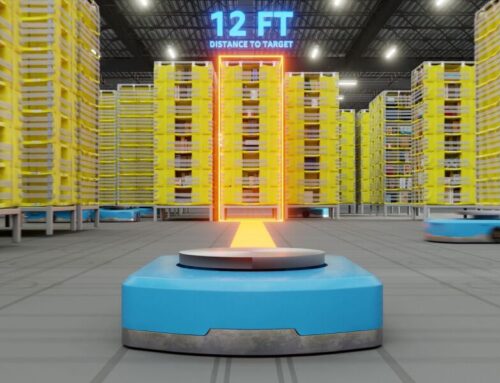Cannabis Vertical Farming Strategic Business Report 2025-2030 | Market Growth Fueled by LE
July 1, 2025
Cannabis vertical farming offers key market opportunities through consistent, year-round cultivation, meeting premium and medicinal quality demands. Innovations in tech like LED lighting, AI, and automation enhance yields and efficiency. With urban production, it supports compliance and scalability, crucial for expanding legal markets.
Cannabis Vertical Farming Market
Dublin, July 01, 2025 (GLOBE NEWSWIRE) — The “Cannabis Vertical Farming – Global Strategic Business Report” report has been added to ResearchAndMarkets.com’s offering.
The global market for Cannabis Vertical Farming was estimated at US$526.4 Million in 2024 and is projected to reach US$1.6 Billion by 2030, growing at a CAGR of 20.3% from 2024 to 2030. This comprehensive report provides an in-depth analysis of market trends, drivers, and forecasts, helping you make informed business decisions. The report includes the most recent global tariff developments and how they impact the Cannabis Vertical Farming market.
As the global cannabis industry matures, cultivators are under increasing pressure to standardize quality, improve yields, and reduce operational risk – all of which are pushing a major shift toward vertical farming. In contrast to traditional greenhouses and outdoor grows, vertical farming offers the advantage of full environmental control, allowing growers to manipulate light, temperature, humidity, and CO2 levels to suit specific strain genetics. This high degree of precision leads to improved cannabinoid profiles, terpene expression, and overall product consistency – key factors in both medicinal and premium recreational markets.
What’s Fueling The Global Rise Of Cannabis Vertical Farming?
The growth in the cannabis vertical farming market is driven by several factors related to technological maturity, evolving end-user needs, market competitiveness, and consumer behavior. The advancement and affordability of energy-efficient LED lighting systems are enabling higher yields with lower power usage, reducing both operating costs and carbon footprints. Increased adoption of automation, environmental sensors, and precision fertigation is allowing growers to reduce labor input while enhancing product consistency and quality. The rising demand for premium, craft, and small-batch cannabis – particularly in mature recreational markets – is encouraging producers to adopt vertical farms for terpene-rich, customized cultivation. In medical cannabis, the need for GMP-compliant, contamination-free, and highly traceable production environments is driving institutional and pharmaceutical adoption of vertical farming infrastructure.
Growth in derivative products – such as oils, edibles, topicals, and infused beverages – is fueling demand for consistent, biomass-rich harvests, which vertical farming supports through year-round cycles and optimized genetics. In urban and densely populated areas, vertical farms enable localized production, supporting supply chain efficiency and sustainability goals. Emerging markets with strict compliance requirements, like Germany, South Korea, and Israel, are increasingly mandating indoor cultivation formats, boosting demand for vertical farming systems. Meanwhile, investor interest in high-margin, scalable cultivation models is pushing cannabis startups and MSOs toward vertical farming as a CAPEX-efficient strategy. The convergence of climate resilience, land-use efficiency, automation, and market segmentation is making vertical farming not just an alternative, but a strategic imperative for modern cannabis operations worldwide.
How Are Innovations In Tech And Infrastructure Elevating Cannabis Yields Indoors?
Cannabis vertical farming is undergoing rapid technological transformation, with innovations in lighting, automation, data analytics, and nutrient delivery reshaping what’s possible in indoor cultivation. One of the most critical enablers has been the widespread adoption of high-efficiency LED grow lights, which emit crop-specific spectrums while drastically reducing power consumption and heat output. This allows for denser canopy stacking, better control over plant morphology, and reduced HVAC loads. Precision fertigation systems are being paired with recirculating hydroponics and aeroponics to deliver nutrients exactly when and where they’re needed, optimizing uptake and reducing waste. Environmental control systems now utilize AI and machine learning to adjust climate conditions in real-time, improving resource efficiency and crop uniformity. Automation has advanced from simple timers to integrated platforms managing irrigation, lighting, and even robotic harvesting in high-volume facilities.
Vertical farms are also increasingly integrated with sensors for real-time tracking of plant health, allowing for early detection of issues like mold, nutrient deficiencies, or environmental stress. At the infrastructure level, modular racking systems, mobile vertical shelving, and aisle-access robotics are improving space utilization and labor efficiency. Remote monitoring dashboards give operators real-time visibility across multiple sites, enabling centralized crop management. Software integration with seed-to-sale tracking platforms ensures regulatory compliance while capturing invaluable production data. These innovations are enabling cannabis producers to scale faster, produce more per square meter, and reduce labor and energy costs – all while delivering superior product quality in tightly regulated markets.
Which End-Use Markets Are Driving Cultivators To Scale Vertical Operations?
The expanding range of cannabis end-use applications is a significant force behind the adoption of vertical farming practices. In the medical cannabis segment, where consistency, purity, and strain-specific efficacy are critical, vertical farming provides the pharmaceutical-grade conditions necessary to meet clinical standards and patient trust. Pharmaceutical firms and licensed producers are increasingly seeking cGMP-compliant facilities, and vertical farms are being designed specifically to meet those audit requirements.
The recreational cannabis market is also evolving – consumers are demanding not just potency, but flavor, aroma, and terpene richness, all of which can be dialed in more effectively within a controlled indoor environment. As consumer sophistication grows, especially in mature markets like Canada, California, and Germany, the emphasis is shifting toward boutique-quality flower and craft strains – categories best served by small-batch, high-tech vertical grow operations.
Beyond flower, there’s significant demand in the extraction market, where biomass quality impacts oil yield, flavor, and cannabinoid content. Edibles, vapes, and wellness products depend on high-quality input material, and vertical farms are increasingly used to standardize biomass output. In emerging markets such as Asia-Pacific and Latin America, governments are issuing medical licenses with strict controls – favoring indoor vertical facilities for traceability and contamination control.
The CBD segment is also driving growth, particularly in Europe and Asia, where cosmetics and wellness brands require pesticide-free, standardized biomass. As cannabis diversifies into beverage infusions, pet supplements, and functional foods, vertical farming is becoming the preferred method for ensuring consistent, pharmaceutical-grade supply that can serve both mainstream and niche product formulations.
Key Insights:
-
Market Growth: Understand the significant growth trajectory of the Shipping Container Structure segment, which is expected to reach US$1.0 Billion by 2030 with a CAGR of a 23.6%. The Building-based Structure segment is also set to grow at 15.5% CAGR over the analysis period.
-
Regional Analysis: Gain insights into the U.S. market, estimated at $138.4 Million in 2024, and China, forecasted to grow at an impressive 19.0% CAGR to reach $242.0 Million by 2030. Discover growth trends in other key regions, including Japan, Canada, Germany, and the Asia-Pacific.
Report Features:
-
Comprehensive Market Data: Independent analysis of annual sales and market forecasts in US$ Million from 2024 to 2030.
-
In-Depth Regional Analysis: Detailed insights into key markets, including the U.S., China, Japan, Canada, Europe, Asia-Pacific, Latin America, Middle East, and Africa.
-
Company Profiles: Coverage of players such as AeroFarms, AG Glide, Agro Lighting, Bowery Farming, CubicFarm Systems Corp. and more.
-
Complimentary Updates: Receive free report updates for one year to keep you informed of the latest market developments.
Scope of Study:
-
Segments: Structure (Shipping Container Structure, Building-based Structure); Component (Vertical Farming Hardware, Vertical Farming Software, Vertical Farming Services); Growing Mechanism (Hydroponics Mechanism, Aeroponics Mechanism, Aquaponics Mechanism); Application (Recreational Cannabis Application, Medical Cannabis Application, Research and Development Application, Other Applications)
-
Geographic Regions/Countries: World; United States; Canada; Japan; China; Europe (France; Germany; Italy; United Kingdom; and Rest of Europe); Asia-Pacific; Rest of World.
Key Attributes:
|
Report Attribute |
Details |
|
No. of Pages |
198 |
|
Forecast Period |
2024 – 2030 |
|
Estimated Market Value (USD) in 2024 |
$526.4 Million |
|
Forecasted Market Value (USD) by 2030 |
$1600 Million |
|
Compound Annual Growth Rate |
20.3% |
|
Regions Covered |
Global |
Key Topics Covered:
MARKET OVERVIEW
-
Influencer Market Insights
-
Tariff Impact on Global Supply Chain Patterns
-
Cannabis Vertical Farming – Global Key Competitors Percentage Market Share in 2025 (E)
-
Competitive Market Presence – Strong/Active/Niche/Trivial for Players Worldwide in 2025 (E)
MARKET TRENDS & DRIVERS
-
Rising Demand for Space-Efficient Cannabis Cultivation Driving Vertical Farming Adoption
-
Controlled Environment Agriculture Improving Yield Consistency and Quality
-
Integration of Automation and Robotics Streamlining Cultivation Operations
-
LED Lighting Innovations Enhancing Cannabinoid and Terpene Profiles
-
Reduction in Water and Resource Usage Supporting Sustainability Goals
-
Urban Cultivation Demand Boosting Interest in Indoor Vertical Cannabis Farms
-
Scalability of Stackable Systems Enabling Micro and Large-Scale Production
-
Data-Driven Cultivation Techniques Optimizing Plant Health and Output
-
Regulatory Support for Indoor Growing Enabling Year-Round Production
-
Hybrid Models Combining Hydroponics and Aeroponics Gaining Traction
-
Rise of Smart Farming Platforms Integrating IoT for Monitoring and Control
-
Increased Investor Interest in High-Tech Grow Facilities Accelerating Adoption
-
Partnerships With Equipment Manufacturers Driving Technology Access
-
Localized Production Models Reducing Transportation Costs and Carbon Footprint
-
Expansion of Craft Cannabis Brands Emphasizing Quality Through Vertical Cultivation
FOCUS ON SELECT PLAYERS:Some of the 34 companies featured in this Cannabis Vertical Farming market report
-
AeroFarms
-
AG Glide
-
Agro Lighting
-
Bowery Farming
-
CubicFarm Systems Corp.
-
Elevate Farms Inc.
-
Freight Farms
-
Glass Pharms Ltd
-
Green Spirit Farms
-
GrowGeneration Corp.
-
Hydrofarm Holdings Group, Inc.
-
iFarm
-
Infinite Acres
-
Kalera
-
MedMen Enterprises Inc.
-
MMI Agriculture
-
Pipp Horticulture
-
Plenty Unlimited Inc.
-
Spacesaver Corporation
-
TotalGrow Lights
For more information about this report visit https://www.researchandmarkets.com/r/e09v89
About ResearchAndMarkets.com
ResearchAndMarkets.com is the world’s leading source for international market research reports and market data. We provide you with the latest data on international and regional markets, key industries, the top companies, new products and the latest trends.
Attachment
CONTACT: CONTACT: ResearchAndMarkets.com Laura Wood,Senior Press Manager press@researchandmarkets.com For E.S.T Office Hours Call 1-917-300-0470 For U.S./ CAN Toll Free Call 1-800-526-8630 For GMT Office Hours Call +353-1-416-8900
Terms and Privacy Policy
Search
RECENT PRESS RELEASES
Related Post


